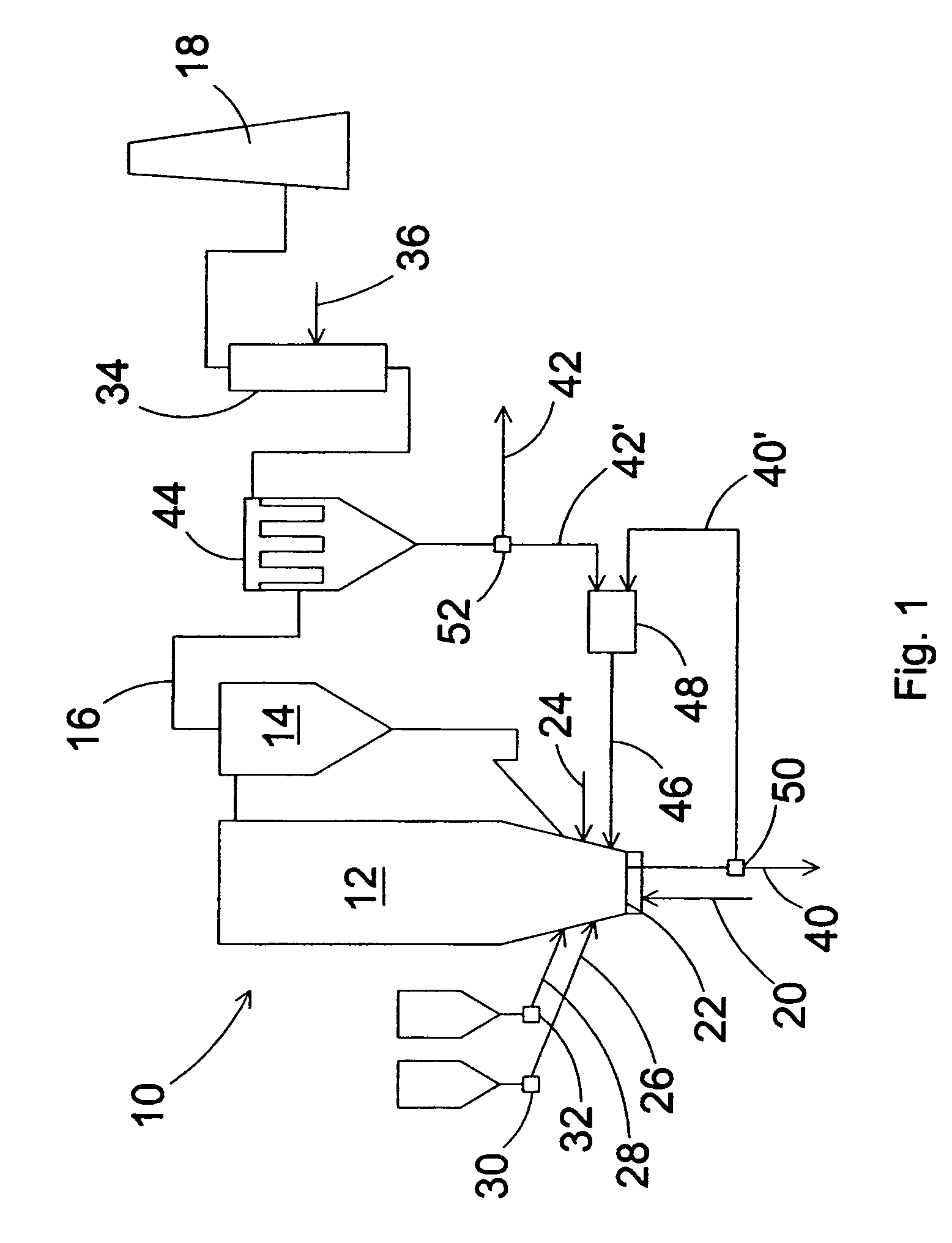Method of reducing sulfur dioxide emissions of a circulating fluidized bed boiler
a technology of circulating fluidized bed and boiler, which is applied in the direction of emissions prevention, combustion types, separation processes, etc., can solve the problems of increasing the thermal efficiency of the boiler, reducing the sulfur-reducing additive cost, and producing large amounts of cao-rich ashes, so as to improve the sulfation efficiency, and enhance the sulfation efficiency
- Summary
- Abstract
- Description
- Claims
- Application Information
AI Technical Summary
Benefits of technology
Problems solved by technology
Method used
Image
Examples
Embodiment Construction
[0027]FIG. 1 schematically illustrates a preferred embodiment of a CFB boiler 10 in accordance with the present invention. The boiler comprises a furnace 12, a cyclone separator 14, and a flue gas channel 16 for directing flue gases discharged from the furnace through a stack 18 to the environment. The furnace 12 includes means 20 for feeding primary air to the furnace through a bottom grid 22, and means 24 for introducing secondary air at a higher level of the furnace. The means 20 for feeding primary air to the furnace may include, for example, a pump, ducting with a flow controller, and a wind box. The means 24 for introducing secondary air may include, for example, branch ducting and a flow controller. Secondary air can be introduced at multiple levels, but for the sake of clarity, a single level is shown in FIG. 1. Although not illustrated in FIG. 1, the flue gas channel 16 optionally may include a heat recovery area.
[0028]The furnace 12 also includes means 26 for feeding fuel ...
PUM
| Property | Measurement | Unit |
|---|---|---|
| /S molar ratio | aaaaa | aaaaa |
| /S molar ratio | aaaaa | aaaaa |
| /S molar ratio | aaaaa | aaaaa |
Abstract
Description
Claims
Application Information
 Login to View More
Login to View More - R&D
- Intellectual Property
- Life Sciences
- Materials
- Tech Scout
- Unparalleled Data Quality
- Higher Quality Content
- 60% Fewer Hallucinations
Browse by: Latest US Patents, China's latest patents, Technical Efficacy Thesaurus, Application Domain, Technology Topic, Popular Technical Reports.
© 2025 PatSnap. All rights reserved.Legal|Privacy policy|Modern Slavery Act Transparency Statement|Sitemap|About US| Contact US: help@patsnap.com



